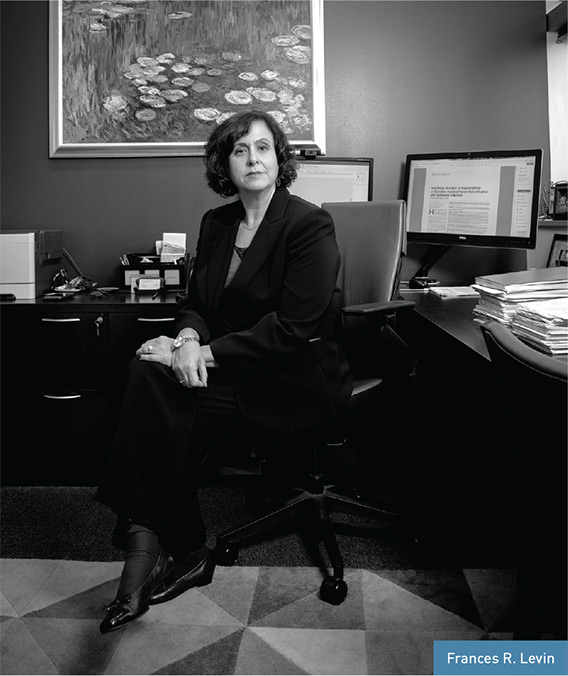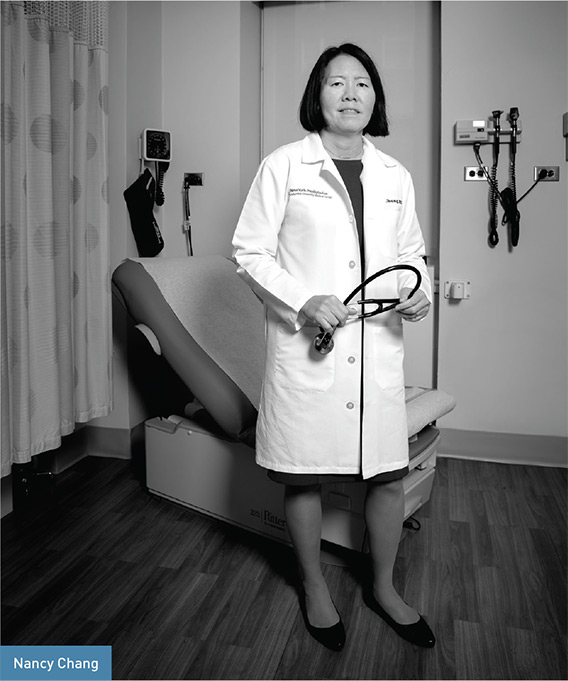A Cascade of Care
Fentanyl gave people with advanced heart disease a second lease on life just a few generations ago. “In the early to mid-1960s, cardiac surgery was still in its infancy,” wrote surgeon, anesthesiologist, and VP&S graduate Theodore H. Stanley’65 in his 2014 report “The Fentanyl Story” for the Journal of Pain. “Patients with end-stage mitral and aortic valvular disease were a particular problem because the severity of their cardiopulmonary dysfunction made them huge anesthetic risks.”
Then in 1979, Dr. Stanley, who died in 2017, and collaborators demonstrated that high-dose, intravenous fentanyl—a fast-onset synthetic with more than 100 times the potency of morphine—addressed the technical demands for anesthesiology during heart surgery in even the most challenging cases, expanding the field of cardiovascular surgery and transforming the prognoses for millions of Americans with advanced heart disease.
Nearly 40 years later, fentanyl is again at the heart of a seismic shift in American public health. This time, however, it plays the role of archvillain in the opioid crisis sweeping the nation. Back in 1960, when it was first engineered in a Belgian laboratory, fentanyl was prized for its cheap, easy manufacture and the enhanced fat solubility that speeds its passage across the blood-brain barrier. It was the most potent opioid in the world, with the fastest onset of action and highest therapeutic index.
Thirty to 50 times more powerful than heroin—and the same price to produce, pound for pound—fentanyl offers a robust return on investment for players in the international illicit drug trade. With a high that combines euphoria and extreme relaxation, fentanyl is an easy sell on the street, especially among opioid-tolerant users of heroin and prescription pills. And given its extreme potency, fentanyl has been increasingly implicated in overdose deaths. Just 2 milligrams—the equivalent of four grains of salt—can be fatal, in part because its potency often exceeds even multiple doses of naloxone, the opioid antagonist used by emergency workers and others to prevent respiratory failure during overdose.
When fentanyl hit New York City in force in 2016, says Mary Bassett’79, who was city health commissioner until she took a position at Harvard in September, overdose deaths spiked by 50 percent; currently 72 percent of overdose deaths in New York are attributable to either heroin or fentanyl. In a May 2018 research letter, the Journal of the American Medical Association reported that 46 percent of all opioid overdose deaths in 2016—including those of Prince and more than 19,000 other Americans—were caused by the same drug that transformed cardiovascular surgery in the 1980s.
The scourge of fentanyl was one of many themes echoing through a day-long opioids symposium convened in late June by the Irving Institute for Clinical and Translational Research. Just days earlier, NIH director Francis Collins had authored a JAMA op-ed announcing that beginning with the 2018 fiscal year, Congress would allocate a $500 million increase to the NIH budget for Helping to End Addiction Long-Term (HEAL), an interdisciplinary initiative to improve treatment for opioid misuse and addiction and to enhance pain management.
Why don’t you start playing blackjack for free, test out your own strategies, or prove the above to be right by playing our online 21 blackjack free.
Critical to that effort, says Irving Institute Director Muredach P. Reilly, MBBCh, will be getting a handle on the current situation. “Epidemiology of the crisis is changing in real time,” says Dr. Reilly, who hosted the symposium with Irving Institute Co-Director Harold Pincus, MD. “We don’t fully understand what’s happening on the ground.” Beyond needing strategies to stem overdose death rates, notes Dr. Reilly, health care leaders want to address effectiveness and health care costs associated with treatment, new interdisciplinary health care models for opioid addiction, infectious disease transmission among opioid users, neonatal opioid withdrawal syndrome, and novel nonopioid treatments for pain and those at high risk of developing opioid dependency.
Focusing on High-Risk Populations
Psychiatrist and epidemiologist Mark Olfson, MD, investigates misuse of prescription drugs, corollaries of self-harm, and strategies for health care reform to promote access to substance use treatment. Compared with those who favor other substances, says Dr. Olfson, opioid users suffer remarkably high rates of mortality. Among those who ultimately die of overdose, most have had multiple encounters with the health system for such risk factors as a mental health diagnosis, previous treatment for opioid use, and heroin overdoses, creating multiple opportunities for intervention and treatment before dying. “This is a persistently high-risk population,” says Dr. Olfson. “Alongside increasing access to treatment for opioid use disorder, it is critically important that we also improve access to treatment for related causes of self-injury.”
Reporting in JAMA Psychiatry, Dr. Olfson and co-authors detailed a further hazard particular to opioid users—the overall increased risk of mortality among users after a nonfatal overdose. In addition to the risk of repeat opioid overdose—a hazard for approximately one-third of those who have already overdosed, regardless of gender, age, or race—users also suffer drastically increased risk for death due to viral hepatitis, HIV, and respiratory diseases, as well as suicide risk more than 25 times that of the general population. “This population is not just vulnerable to the health threat posed by opioid overdose,” says Dr. Olfson, “but also to health threats posed by a constellation of other medical and mental health problems, which calls for integrating medical and mental health services with substance use services.”
Currently, less than 20 percent of people with opioid use disorder receive treatment of any kind and of those, less than one-third receive medication-assisted treatment (MAT), which has been shown to improve health, reduce infectious disease transmission risk, minimize criminal activity, and reduce the risk of relapse, overdose, and death. “Effective treatment should include psychosocial support, family intervention, attention to psychiatric disorders, medical status, providing medications, and psychotherapy,” says Frances R. Levin, MD, chief of the Division on Substance Use Disorders at the New York State Psychiatric Institute. “I’m agnostic about which psychotherapeutic approach is best, but we do patients a disservice and put them at risk of an overdose if we do not offer and, hopefully, provide MAT.”

Framework for Treatment
In August, Drs. Olfson, Pincus, and Levin were co-authors—with lead author Arthur Robin Williams, MD, Edward Nunes, MD, and others—of a proposal for a unified framework. Published in the Journal of Substance Abuse Treatment, the framework integrates MAT, mental health care, and psychosocial support for people with opioid use disorder. Drawing on a concept adopted early in the campaign to transform HIV/AIDS from a death sentence into a chronic condition, the team outlined a “cascade of care” intended to provide a unified set of quality measures in the treatment of opioid use disorder: Identify people affected with opioid use disorder, engage them in care, initiate MAT, retain them in MAT for a minimum of six months, and promote their continued abstinence. “For people with opioid use disorder, the challenges include engaging people in treatment and keeping them on MAT to achieve remission in opioid misuse,” says Dr. Olfson. “Implementing a cascade of care framework can help identify gaps in treatment and opportunities for improvement while informing treatment planning and monitoring key clinical targets.”
Dropout from some medication-assisted treatment programs is a major problem and often leads to relapse. Many patients stop treatment because they are doing better and believe they no longer need medication.
Dr. Nunes has spent decades studying treatments for opioid use disorder. As principal investigator of the New York Node of the National Institute on Drug Abuse Clinical Trials Network and other NIDA-funded projects, he has run myriad studies investigating the efficacy of the three FDA-approved MAT options for opioid users intent on recovery: methadone, naltrexone, and buprenorphine. “There are no more powerful treatments in psychiatry than these three medications. They work remarkably well, if you can get the patients to take them and keep the patients taking them,” says Dr. Nunes.

The medications, however, are not perfect. Like a nicotine patch, slow, steady methadone protects against overdose and helps patients become abstinent. But methadone is only available through specially licensed clinics, which makes it burdensome to patients who need daily observed dosing at the outset. Also, methadone clinics are primarily located in large population centers, and many parts of the country have no methadone clinics. Naltrexone, an opioid antagonist, is available as an extended-release injection and can be prescribed by any physician. Patients must be detoxified before they can initiate naltrexone injections, and few physicians are familiar with the option. Buprenorphine requires neither detoxification nor abstinence to initiate treatment but is available only from specially trained and certified clinicians, whose patient loads are limited by the Substance Abuse and Mental Health Services Administration (SAMHSA)—30 patients in the first year and up to 275 in subsequent years.
Currently, only about 5 percent of practicing physicians in the United States are licensed to prescribe buprenorphine. According to the White House opioid commission’s 2017 report, 72 percent of the most rural counties—and nearly half of all counties nationwide—lack even a single health care practitioner licensed to prescribe buprenorphine.
Dropout from treatment is a major problem for both naltrexone and buprenorphine. A recent comparative effectiveness trial co-led by Dr. Nunes, published in Lancet, showed that among patients at one of eight community-based treatment programs across the United States, more than 50 percent of patients had dropped out of treatment by six months after treatment entry. Dropout is often followed by relapse to opioid use. Dropout occurs for various reasons, but a study by Dr. Williams, published in the American Journal on Addictions, showed that many patients stopped treatment because they were doing better and believed they no longer needed medication. An important focus of future work will be to find ways to reduce the dropout rate from these effective medication treatments.

Educating Clinicians, Students, Residents
To increase the number of professionals who offer MAT, Dr. Levin has served since 2014 as medical director for a series of Providers Clinical Support System grants from SAMHSA to educate practicing physicians and nurse practitioners in MAT, to increase the number of clinicians credentialed to prescribe buprenorphine, and to provide one-on-one clinical mentorship to sustain that momentum, providing an online residency of sorts. “You have to have a workforce willing to treat addiction,” says Dr. Levin. “It’s poignant how many users are not adequately identified, initiated on MAT, or maintained on MAT. We need strategies to improve that.”
Dr. Levin sees particular promise in training medical students to detect substance use disorder, making the diagnosis on par with diagnosis of diabetes, heart disease, or a broken leg. In 2015, Dr. Levin and colleagues developed a comprehensive, integrated training program to teach Columbia medical and dental students a technique known as SBIRT—Screening, Brief Intervention, and Referral to Treatment—in which students learn indicators of high risk for substance use disorder and ways to screen patients for the condition. “If you haven’t been trained in talking with patients with addiction, putting them on MAT will not occur,” says Dr. Levin. “It’s a hurdle that medical school education needs to address.”

SBIRT extends a project Dr. Levin began more than a decade ago, in partnership with Nancy Chang’95, then assistant director for education and teaching for the Division of General Medicine, and VP&S colleagues. In 2008, the team developed a curriculum for house staff to confront the intersection of chronic pain management in primary care and substance abuse. The two-hour, case-based program, developed with support from SAMHSA, was designed to help residents recognize prescription opioid abuse and structure the treatment of primary care patients, including those with an opioid or other substance disorder.
Now director of the VP&S primary care clerkship, Dr. Chang says she saw the effect of such programs firsthand as residents contending with the challenges of treating chronic pain became increasingly cautious with the use of opioid prescriptions. “Chronic pain is still a relatively small part of the medical school curriculum and even more experienced doctors struggle with the ability to manage chronic suffering, which requires a holistic understanding of the patient,” she says. Even internists with decades of experience—herself, included, says Dr. Chang—have greater comfort with quantitative, objective data: blood pressure, viral counts, cholesterol, and the like. “Chronic pains come in innumerable varieties. The context and etiology of one person’s chronic back pain will not be the same as another’s.”
Clinicians must abandon the judgment and stigma that often permeate encounters between physicians and patients living with addiction.
Any discussion about opioid addiction cannot ignore the role of chronic pain, and any prescription for reducing the epidemic should include improvements in diagnosing and treating pains that may have first led a patient to opioid medications. Getting to the core of a patient’s suffering will demand time, attention, and trust—features of relationships that develop over the course of multiple encounters. “Early on, residents need to learn a lot of biomedical facts about patients,” says Dr. Chang. With seasoning and development of longitudinal relationships, says Dr. Chang, residents’ capacity and curiosity expand. “They grow beyond an initial focus on the more objective and easily treated conditions like high blood pressure, diabetes, and even organ failure to ownership and care of chronic pains. In understanding how the pains evolved and impacted the lives of patients and their family over many years, residents become more invested in addressing mental health and social barriers.”
The power of longitudinal relationships to expand a trainee’s capacity to cope with the complexity of chronic pain has been particularly apparent among VP&S students participating in a 12-week, amalgamated clerkship launched in 2014 at the James J. Peters VA Medical Center in the Bronx. Students in the amalgamated clerkship serve as health care navigators for a small panel of recently hospitalized patients with severe medical comorbidities and often complex psychosocial needs. Over the course of the clerkship, students reflect on the relationships forming with their patients and help coordinate and follow patient care to providers in primary care, orthopedics, urology, and other specialties. “You can really see them develop a much more nuanced understanding of the illness experience, learning what matters the most to patients.” says Dr. Chang. “And that’s a better context for teaching about caring for chronic pain and chronic suffering.”
For aspiring physicians, perhaps the hardest lesson to master when working with patients in the throes of chronic pain and suffering is the possibility that writing a prescription can risk compounding a patient’s woes. “Certain individuals have an outsized response to opioids,” says Dr. Nunes, noting that no test can predict whether a person will have a physiological disposition to addiction. “It’s like an allergy—you don’t know you have it until you’re exposed. If you’re vulnerable to opioids, once you are exposed you may not be able to stop.”
Nancy Chang, MD, associate professor of medicine
Frances R. Levin, MD, the Kennedy-Leavy Professor of Psychiatry
Edward Nunes, MD, professor of psychiatry
Mark Olfson, MD, professor of psychiatry (VP&S) and epidemiology (Mailman School of Public Health)
Harold Pincus, MD, professor and vice chair of the Department of Psychiatry and co-director, Irving Institute for Clinical and Translational Research
Muredach P. Reilly, MBBCh, the Herbert and Florence Irving Professor of Medicine and director, Irving Institute for Clinical and Translational Research
Arthur Robin Williams, MD, assistant professor of clinical psychiatry
Once an addiction is suspected or diagnosed, learning to confront substance use disorder demands introspection, says Dr. Levin, because clinicians must abandon the judgment and stigma that often permeate encounters between physicians and patients living with addiction. “Medications for opioid use disorder are lifesaving,” says Dr. Levin, who compares treatment to the necessity of insulin injections to sustain the metabolic function of a person with diabetes or the imperative for a person with severe hypertension to have a prescription to avert stroke.
Medications for diabetes and other ailments are not enough, though. In addition to writing a prescription, most doctors urge their patients with metabolic syndrome to modify their diet, get moving, and reduce stress. For people with opioid use disorder, such supportive interventions include diagnosis and treatment of the underlying psychiatric disorders that afflict approximately 50 percent of people with opioid use disorder and personal and family support. “With buprenorphine, you can help people detox,” says Dr. Chang, “but to support them through their healing, there are other components. They need ongoing treatment for longstanding, unaddressed mental health conditions.”
Currently, says Dr. Chang, she and others who oversee internal medicine residents at Columbia are in the process of sorting out how to train residents not only in medication-assisted treatment but also in establishing a robust holistic, multidisciplinary support system necessary to address underlying issues after MAT puts an opioid use disorder on the back burner. “Early intervention is key,” says Dr. Levin. “People who are addicted don’t only talk about the physical hold of drugs, they talk about what led to the use—stress, trauma—until they developed an addiction that took over. You have to understand that to help people get into and maintain recovery.
- Log in to post comments


